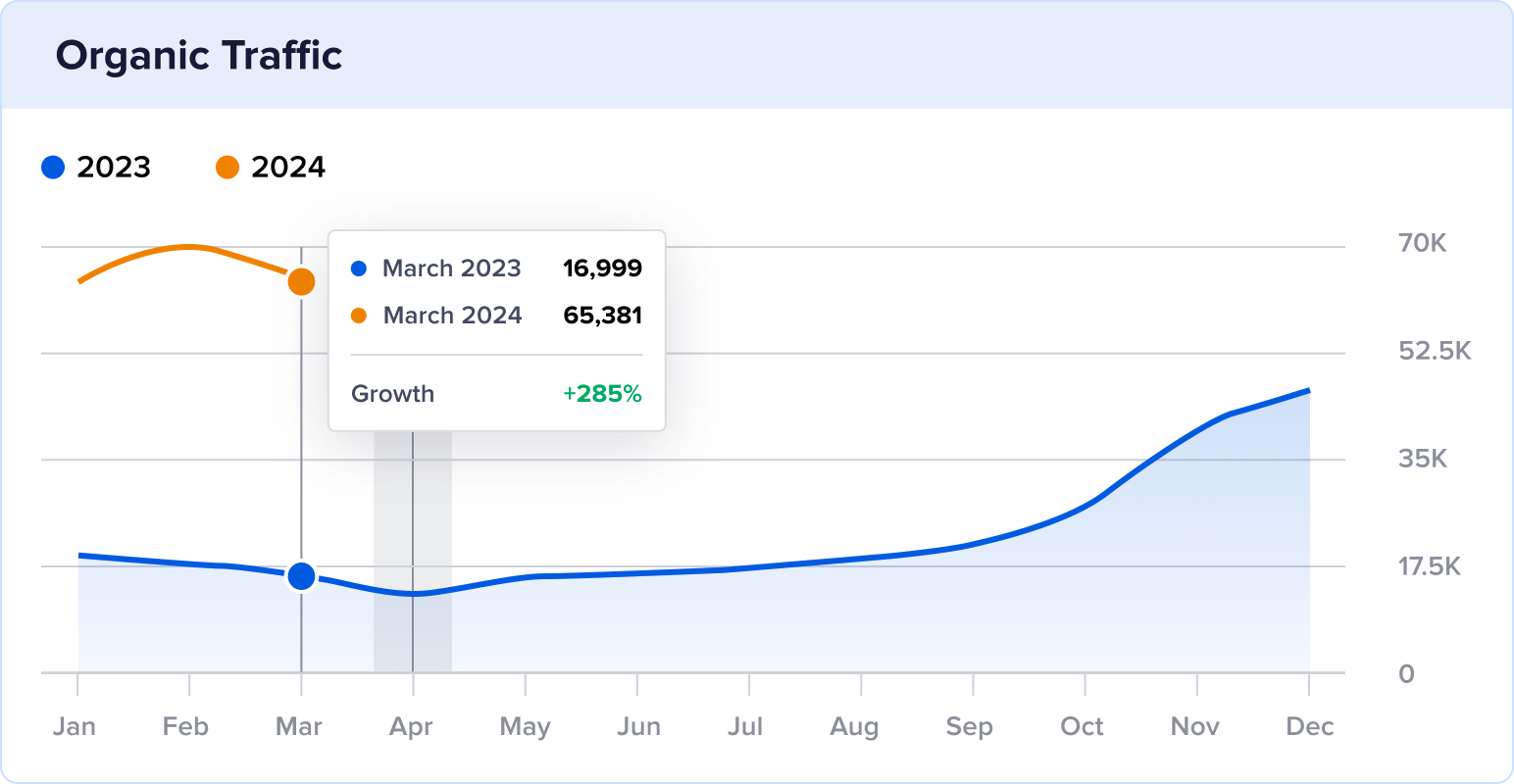How a Public Transit App Grew Organic Traffic by 1,134% YoY
https://transitapp.com/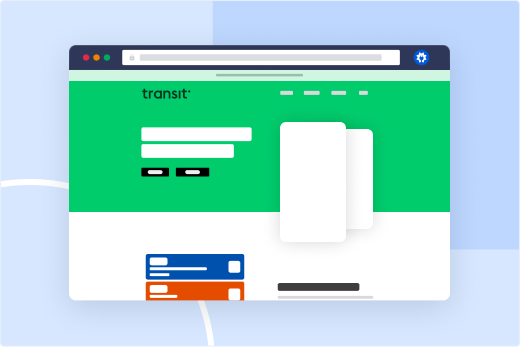
Stats
54.3K to 669.9K Monthly Visits
Industry
Web & Tech
Niche
Mobile App
Reporting Date
October 2023
In the hustle and bustle of urban life, transit mobile apps are a staple for city dwellers and travelers. These digital companions guide users through their commuting options, making travel a breeze.
And when every commuter is armed with a smartphone, competition is intense.
So, how are apps boosting brand awareness to win these coveted positions on users’ screens?
Some are making the smart move to leverage their websites and earn users’ trust. No one is doing this better than transitapp.com.
In this SEO case study, we’ll reveal how they broke a 10-year standstill to become an industry leader in 2023.
Let’s get started.
In This Article
About Transit
Transit is a mobile app for commuters. It provides real-time public transportation data, such as arrival times, departures, and delays.
The Transit website also makes this information readily available to desktop users.
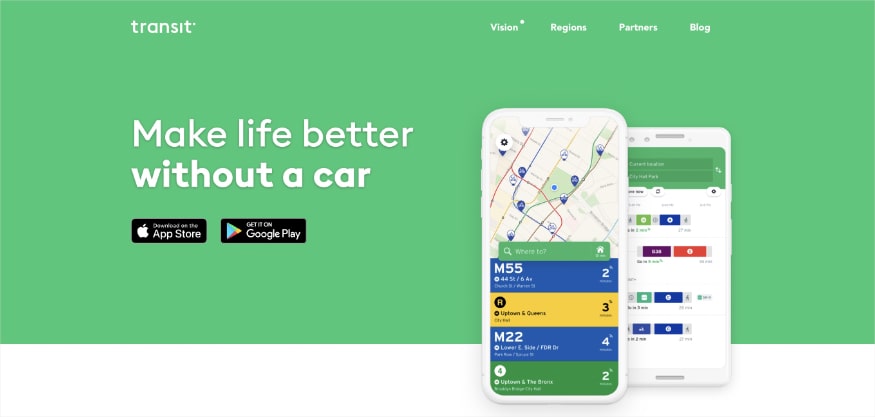
Today, Transit serves over 300 cities worldwide.
Furthermore, it’s a leader in the navigation space. Transit has over 10 million downloads on Android and ranks #4 in Apple navigation apps.
Historical Performance
Transit didn’t reach this level of popularity overnight. In fact, their story began over 10 years ago.
The company started in 2012 in Montreal, Canada.
For the first few years, website traffic was relatively minimal. Then, in 2016, they started to coast in the 20-30K range per month.
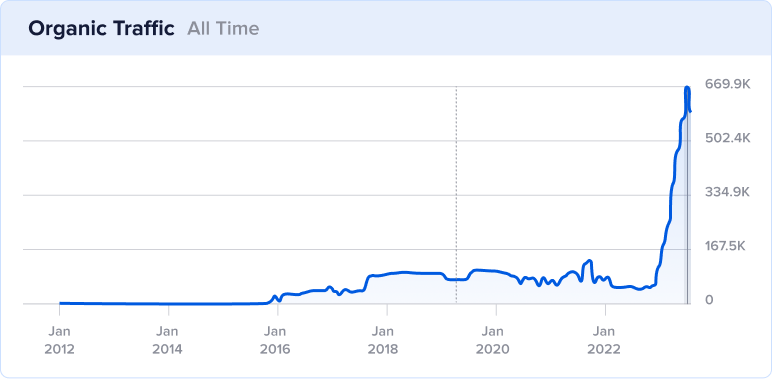
2018 to 2020 brought some of their highest traffic, with an average of 91K monthly visits.
However, Transit was on the cusp of fame. And in 2023, they catapulted their traffic to unprecedented heights.
A growth trend emerged in April, marking a new era for the brand’s visibility and success.
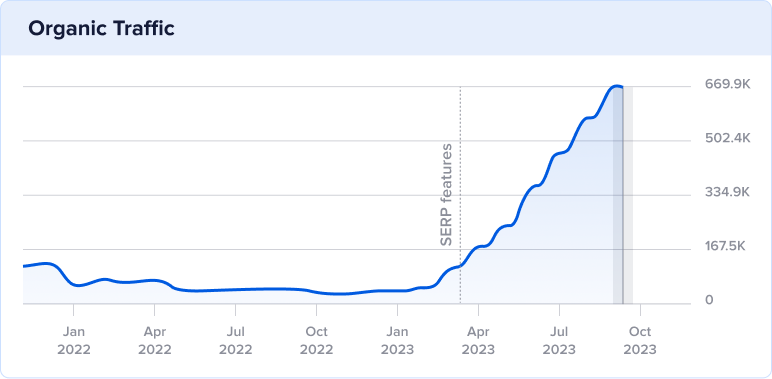
So, how did they get here? And what exactly happened to kick off this incredible growth?
Let’s find out.
The Catalyst: How Transit Reached 669.8K Monthly Visits
Transitapp.com grew its organic traffic by performing the following:
- Ramping up content production
- Leveraging programmatic SEO
- Using FAQs to win spots in People Also Ask
- Acquiring high authority backlinks
We’ll examine each item in detail to understand its significance and contribution to Transit’s success.
Let’s get started.
1. Ramping Up Content Production
Up until spring 2021, Transit had under 200 pages on its website. They reached the 300 mark in May and stayed here for the next 2 years.
Then, in March 2023, Transit’s content strategy started to take shape. They jumped to 1,610 pages in a matter of weeks.
And the payoff couldn’t have been better.
April’s traffic nearly doubled to the prior month, reaching their most visitors yet.
The chart below demonstrates this spike and the exponential growth in pages that followed.

And while October’s page count is lower than previous months, this month’s traffic set a record.
So, besides the number of pages now live on the site, what exactly did they add to drive these new organic visits?
The answer lies in their app: a network that targets every region’s public transportation mode, line, and schedule.
For the website, this came in the form of landing pages.
Over the year, Transit built out detailed pages on regional subways, buses, railways, and ferries.
Each page is dedicated to a specific commute and includes a route map, timetable, and FAQs.
Here’s an example of one:
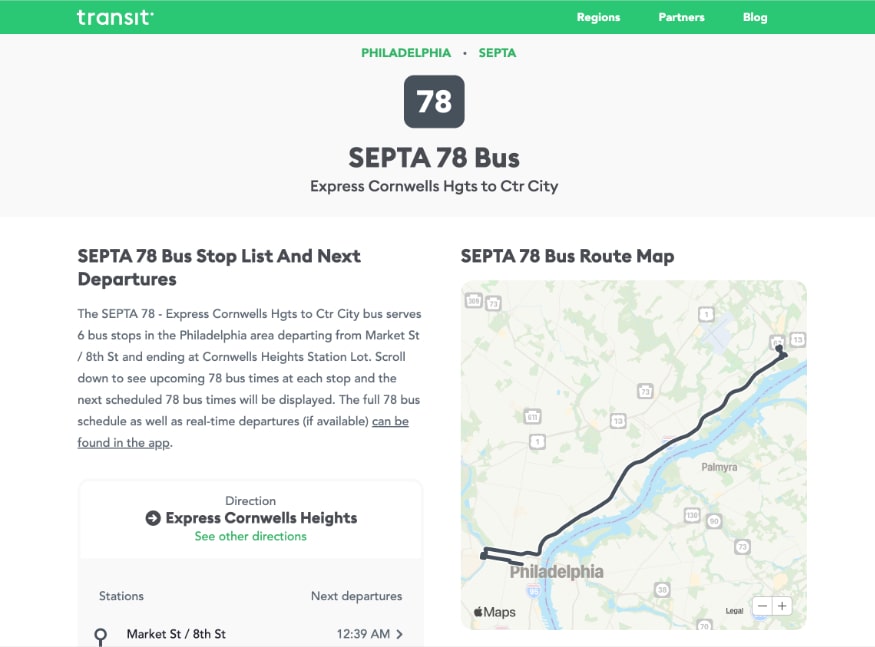
Why this matters:
Transit’s decision to expand its content offering proved transformative in its digital success. With this new content came new rankings, new traffic, and more visibility than ever.
Below, we can see just how impactful this content strategy was for its keyword rankings.
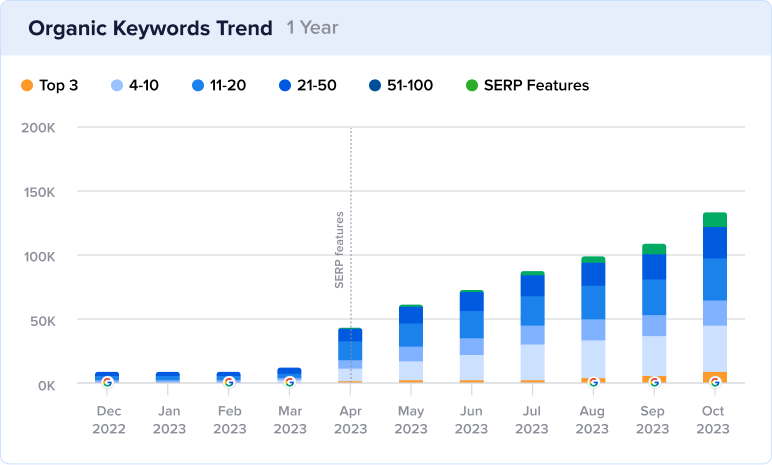
It’s even more impressive when compared to last year’s data:

It’s no secret that building out your content creates more opportunities to rank and drive traffic.
But not every strategy produces the same results. Your content needs to be up to par.
Transit did a phenomenal job creating user-centric content with targeted search intent.
Every single one of these pages targets a very specific user need. And their content delivers.
For website owners, take note. Find out your audience’s needs, then tailor your content to meet the demand.
Easier said than done, right?
Well, it doesn’t have to be hard when you know where to start. That’s where keyword research comes in.
How to use keyword research to identify content opportunities:
Keyword research is at the heart of finding new ways to build out your content. Your content efforts can go to waste if there isn’t a demand for what you’re creating.
Keyword research tells you exactly what people are looking for.
This guide shows you how to do keyword research using popular SEO tools.
Then, once you’ve collected a list of target keywords, use them as the foundation for your content strategy. Topic clusters can help you with this process and keep you on track as you build out your content.
Tools for keyword research:
Did you know you can perform keyword research directly in WordPress?
All in One SEO (AIOSEO) makes this possible by connecting to your Semrush account.
Our Keyphrase Suggestions tool uses your focus keyphrase to fetch relevant keywords from Semrush. Then, we present them to you.
After clicking Get Additional Keyphrases, you’ll receive a list of keyword ideas.
Here’s an example:

Once you add and optimize for a specific keyword, TruSEO will check your optimizations and let you know how it performs.
Alternatively, you could add these terms to an ongoing keyword list and save them for future content.
Next, let’s look at how Transit produced this amount of new pages with the help of automation.
2. Leveraging Programmatic SEO
At its peak, Transit had 21,578 pages on its website. That’s a 21.2K increase over 7 months prior.
Creating that many landing pages in that amount of time is no small feat.
So, how’d they do it? Automation.
Transit has tell-tale signs of using programmatic SEO. This process uses data and automation tools to produce pages at scale.
Essentially, you create a template and provide data that software uses to generate unique content.
It’s only as good as the information you provide, so it’s more complex than a quick and easy win.
(And if you do it wrong, you may find yourself searching how to recover from a Google penalty.)
In Transit’s case, they created an outstanding template and provided their target keywords to make the most out of programmatic SEO.
Each landing page delivers a rich user experience, answering everything related to that commute.
Here’s an example of one of these pages for the NYC Subway Q Train:
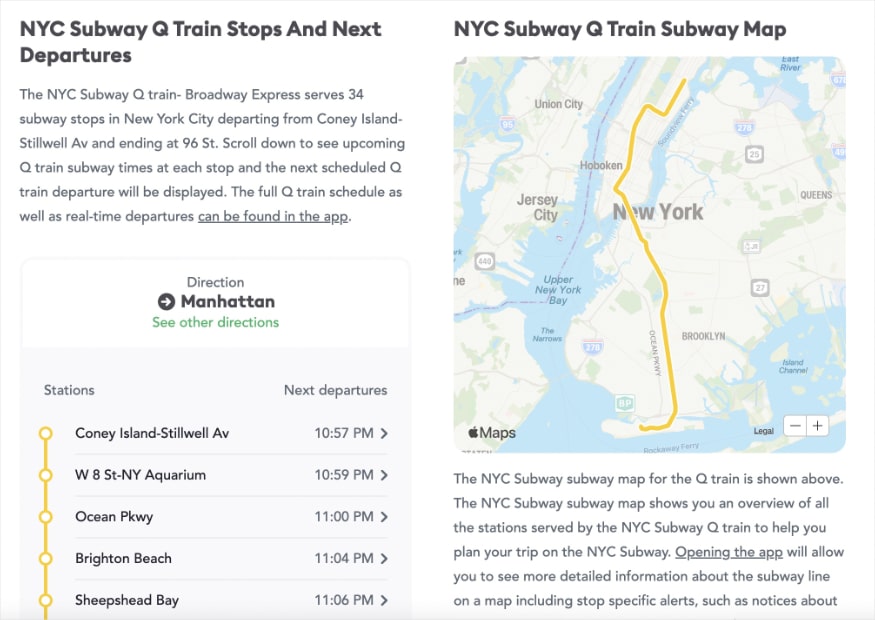
And now, take a look at this page for a Dublin bus:

Look familiar?
That’s a programmatic SEO template in action.
Each page also includes a list of FAQs, which we’ll explore in our next section.
Why this matters:
Transit harnessed the full potential of programmatic SEO by crafting a comprehensive template. The pages fulfill search intent and provide an informationally-rich user experience.
Ultimately, this serves as a lesson for those willing to do the groundwork.
Programmatic SEO requires time, effort, and the right tools to be successful. When done right, it can be a powerful way of amplifying your content production.
How to do programmatic SEO on your site:
This Zapier article shows you how to do programmatic SEO on your website.
It’s also important to note that programmatic SEO isn’t limited to content creation.
You can automate SEO processes without eliminating hand-written content altogether. (We prefer this method.)
Some ways of accomplishing this are:
- Using AI to write meta titles and meta descriptions
- Setting image alt text and title tags to generate automatically with image smart tags
- Automatically redirecting 404 pages to your homepage (or any custom page)
- Leveraging an SEO plugin to get internal linking suggestions in WordPress
Tools for programmatic SEO:
AIOSEO can help you automate certain processes to make your optimizations more efficient.
Regarding the above bullet point list, AIOSEO has a tool for each task:
- Metadata – AI Title/Description Generator crafts unique and compelling meta titles and descriptions in just 1 click.
- Image SEO – Turn on Image SEO to add variables and customize image attributes automatically.
- 404 Redirects – Redirection Manager makes it easy to help users and search engines navigate your site and avoid page not found errors.
- Linking – Link Assistant generates internal linking suggestions directly in the WordPress editor. Find linking opportunities fast and add them easily to your content.
Next, let’s discover how FAQs have been a game-changer to Transit’s YoY growth.
3. Using FAQs to Win Spots in People Also Ask
As we mentioned earlier, Transit includes FAQs on its landing pages.
Here is what it looks like on the same NYC Subway Q page we looked at earlier:
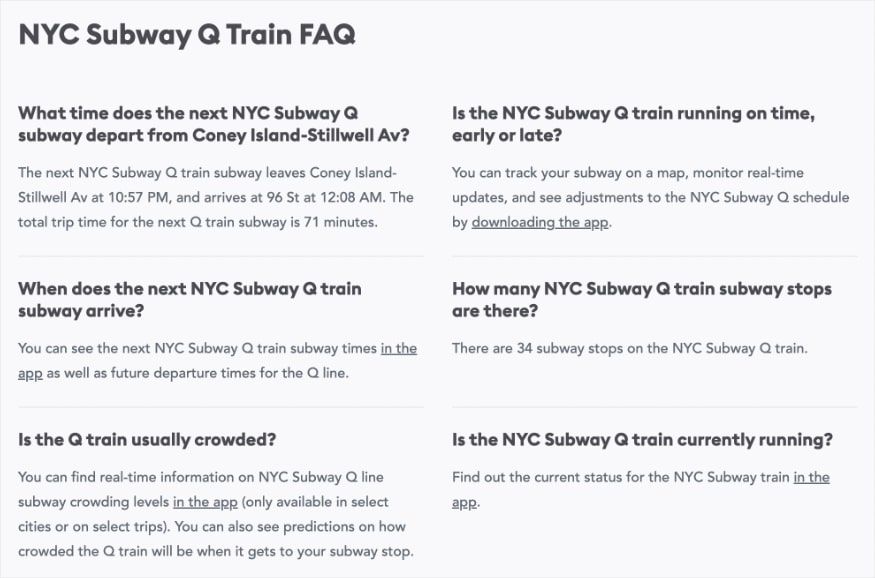
(If you were to visit the Dublin bus 27 page, you would see an identical list of questions. Different keywords and answers, of course.)
These questions play an important role at transitapp.com.
Not only do they serve their audience with helpful, user-centric content, but they also win rich results in Google’s People Also Ask (PAA).
The PAA section presents users with relevant queries to their original search. This is what they look like on the search engine results page (SERP):
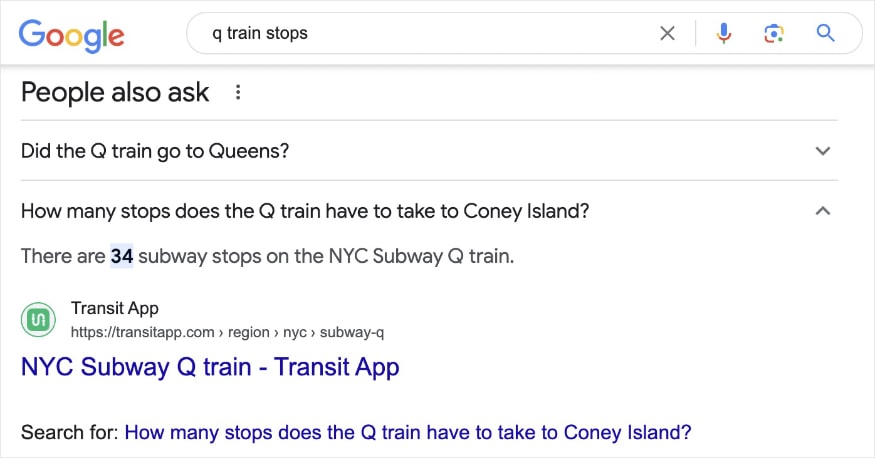
Transit generates a lot of these rich results in 2023. Most notably, in October, they ranked for 11K keywords in PAA.
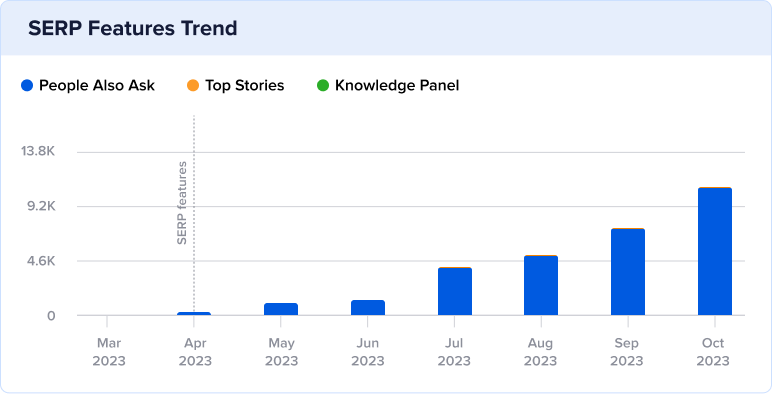
Why this matters:
Google’s PAA section is prime real estate on the SERP.
Due to its prominent positioning, PAA results are known to improve key metrics, like clickthrough rate (CTR) and organic traffic.
The PAA section is also great for websites looking to boost brand awareness and earn credibility in the eyes of users.
How to optimize for PAA on your site:
Let’s use the earlier FAQ example to demonstrate how to optimize for PAA on your site.
Here is the question on Transit’s page:

- Locate a question-based keyword (or formulate your keyword in the form of a question).
- Use this keyword in your subheading.
- Answer the question in the copy immediately following your subheading. Keep your answer concise. Search engines prefer shorter answers because space is limited in the PAA section.
- Add FAQ schema.
For a more detailed tutorial, visit this article on how to optimize for Google’s PAA section. We’ll take you through each step.
Tools for winning PAA results
AIOSEO’s Schema Generator is your ally for winning rich results in Google’s PAA.
Select FAQ schema markup from our Schema Catalog, and we’ll implement it for you.

We can also help you ensure you position your keyword in the right areas, including your subheadings.
Here’s an example of how TruSEO analyzes your content optimizations and tells you exactly where and how to make improvements.
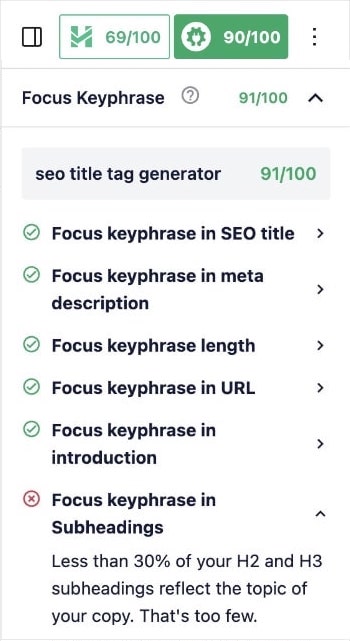
Finally, we’ll look at the last factor in Transit’s remarkable growth: backlinks.
4. Acquiring High Authority Backlinks
In 2023, Transit saw an increase in backlinks. August was their most successful month, with 1.2 million backlinks.
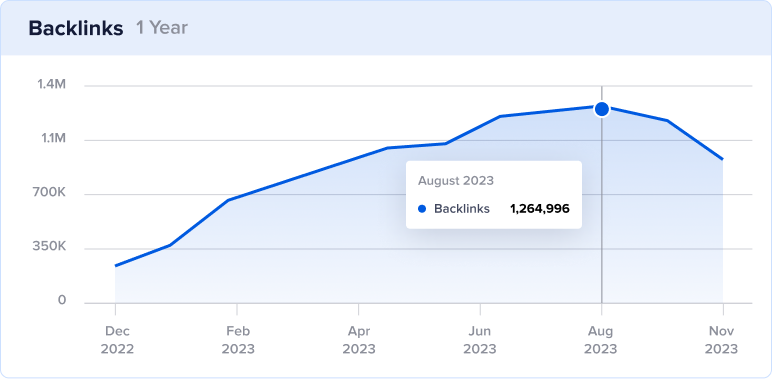
When reviewing the individual backlinks, several have an Authority Score of 70 or higher. Many of these come from their partners, which are regional public transit services.
Note: Authority Score (AS) is a Semrush metric for measuring a domain’s overall quality and performance. You may also see this metric as Domain Authority (DA).
Furthermore, Transit has a staggering follow-to-nofollow ratio, as shown below.

Why this matters:
Backlinks are among the top two Google ranking factors, making them a powerful driver of traffic and rankings. They act like votes of confidence for your website, communicating to search engines that your content is credible.
We also have to commend Transit on their backlink profile. It’s one of the cleanest we’ve seen while analyzing websites thus far. And here’s what we love about it:
Their backlinks are:
- Relevant (they’re related to the transit industry)
- Credible (come from authentic websites, not link schemes)
- Use natural anchor text (the text fits within the content where it appears)
- Dofollow (“follow” links allow search engines to follow the link, discover your content, and transfer link equity)
How to do link building on your site:
This guide shows you how to get backlinks for your website. It emphasizes the importance of quality over quantity and stresses relevancy.
It’s also important to note that an effective linking strategy goes beyond backlinks.
You should also optimize for the following links:
- Internal (from one page on your site to another page on your site)
- Outbound (from your site to another external site)
This link-building guide has everything you need to know to optimize for each.
Tools for link building:
Link Assistant can help you find internal linking opportunities in no time. With linking suggestions that populate directly in the WordPress editor, it’s as easy as clicking Add Link.
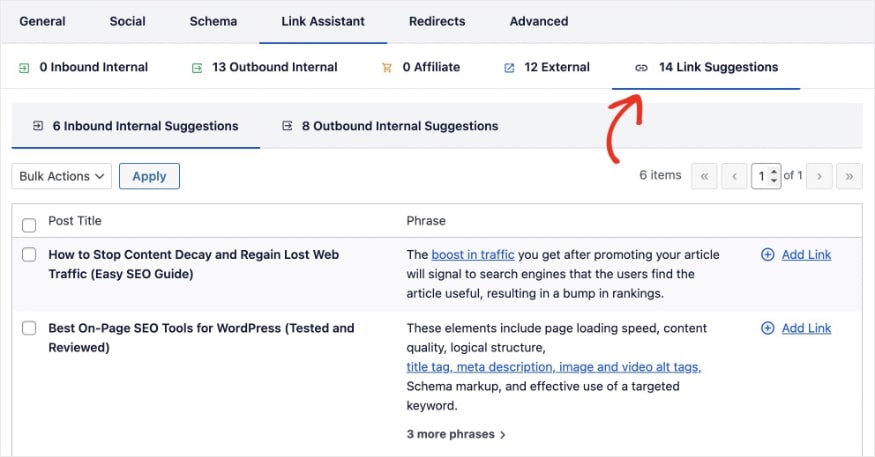
Standout SEO Wins
Before we wrap up, there’s another SEO technique worth highlighting at transitapp.com:
1. They optimize for content readability.
Content readability measures how easily users can read and understand your content. It uses factors like word choice, sentence length, and syllable count.
While readability is not a direct Google ranking factor, it can improve certain SEO metrics, like time on page and bounce rate.
Transit does the following to improve readability:
- They use subheadings for a clear content hierarchy. Users and bots easily navigate the content thanks to clear, organized subheadings. This makes it easier to follow and encourages users to stay on the page longer.
- There’s a strategic use of white space. Transit doesn’t overwhelm its audience with blocks of text.
- Multimedia engages the user. Maps and routes enhance the content and provide visual aids for the users.
Tool: TruSEO checks your content’s readability for you. You’ll get a score that tells you which factors are performing well and actionable items for those needing a boost.
Here’s an example of the TruSEO Readability checklist:
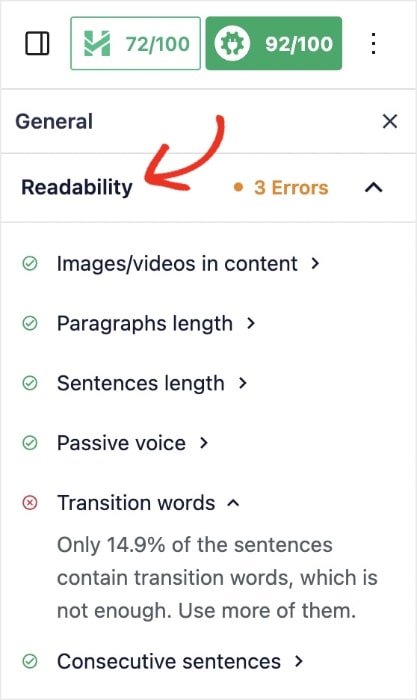
Takeaways
In our analysis of transitapp.com, we’ve discovered the strategies that finally put them on the map.
2023’s content strategy has proven fruitful, with more organic traffic than ever in its 11-year online presence.
Now, let’s recap which strategies to use on your website and others to reconsider.
Top 3 Strategies to Emulate
- Build out your content to rank for more keywords. Creating content for a range of relevant keywords can enhance your chances of winning rankings and traffic. This approach caters to your audience and strengthens your site’s authority in your niche.
- Leverage automation to streamline content creation. Automation tools can significantly boost your efficiency and output. By streamlining your workflow, you can spend more time creating high-quality content for your audience.
- Optimize for People Also Ask with FAQs. The PAA section is a strong driver of traffic and brand awareness. FAQs are a great way of getting a spot in these results. FAQs also enhance the user experience when on your page. It is a true win-win scenario.
Bottom 3 Strategies to Reconsider
- Not catering to the 404 page. Page not found errors are bound to happen, and it’s best to have a strategy to address them. Transit’s 404 pages currently say, “This page could not be found.” And that’s it. There’s no search bar, no redirect to the home page, and no buttons to go elsewhere. It’s a dead end. You can prevent this by automatically redirecting 404 content or creating a custom 404 page to improve the user experience.
- Making top-level pages indexable. Some of Transit’s high-category pages, like the NYC and London regions, contain noindex directives. This tells bots to crawl but not index the page. This means it cannot rank in search results. AIOSEO’s Robot Editor can help you configure this setting to show (or hide) your content in search results.
- Missing meta descriptions. Every indexable page of your website should have a meta description. These help search engines and users understand what your page is about. They also play an important role in convincing users to click through to your site from the SERP. You can even leverage automation and have AI meta description generator write them for you.
Steal Our SEO Winning Strategy: A Checklist for Your Website
Do you want to join the winning ranks of companies like Transit?
You, too, can crawl the SERP to higher rankings and more traffic. And this SEO checklist will get you there.
Download A Free SEO Checklist
Access our comprehensive SEO Checklist with a single click. We’ll deliver it straight to you, putting actionable items with SEO tools and tutorials right at your fingertips.
Enter your name and email to download a free SEO checklist.
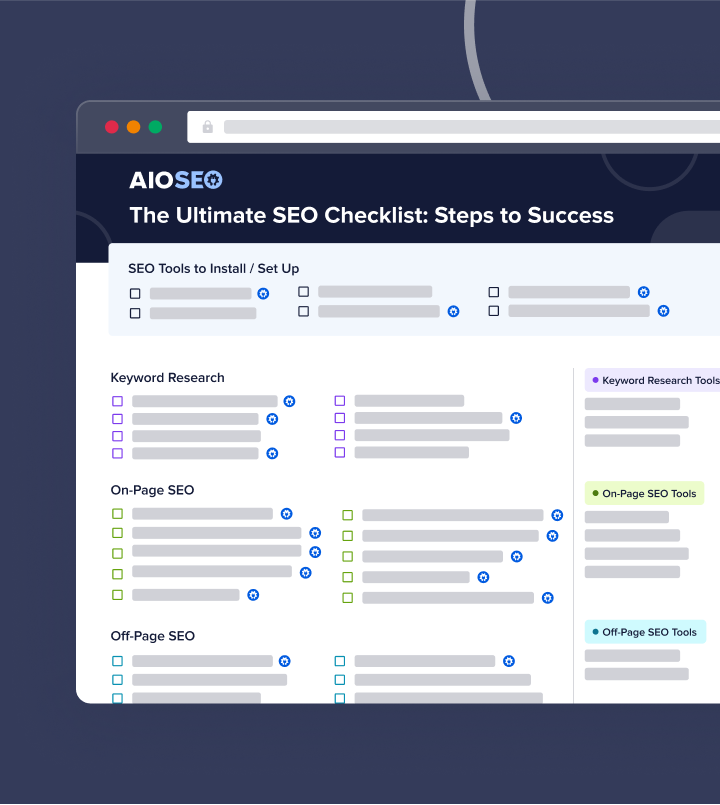
Boost Your Rankings and Grow Your Visibility With AIOSEO
What if you could skip the checklist and take a direct route to a winning SEO strategy?
AIOSEO makes your journey to organic success more efficient than ever.
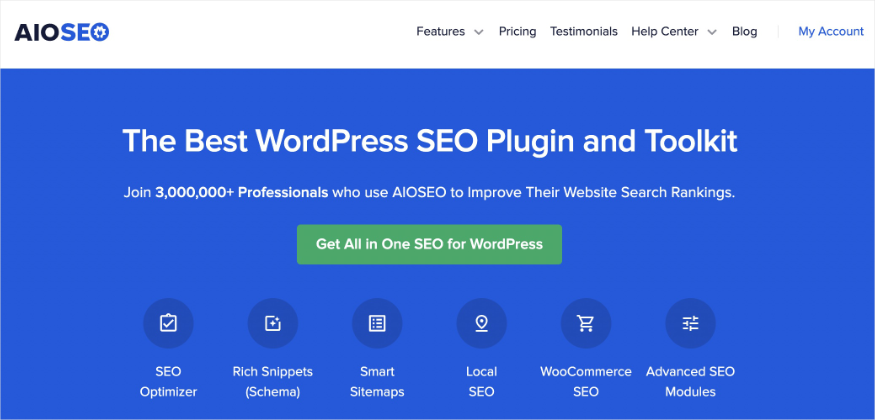
AIOSEO is the best WordPress SEO plugin on the market. Trusted by over 3 million website owners and marketers, we make it easy to improve your website’s SEO. Our powerful suite of tools helps you streamline your optimizations to save time and, more importantly, get results.
Here are a few of our favorite features:
- Semrush Keyphrase Suggestions: Find new keywords without ever leaving WordPress. AIOSEO connects with your Semrush account to pull keyphrase suggestions and serve them to you in the WordPress editor.
- TruSEO On-Page Analysis: Get an in-depth but easy-to-understand analysis of your optimization efforts. Each page includes an actionable checklist to help you maximize your content’s reach.
- AI Title & Description Generator: This groundbreaking tool uses AI to craft unique, clickable metadata for your website.
- Image SEO: Save time on manual optimizations by turning on automatic image alt text and title attribute. It only takes 1 click.
- Redirection Manager: Create a seamless user navigation experience that prevents humans and bots from getting lost when you move content. Our Redirection Manager helps you easily choose and implement the best redirect type.
- Link Assistant: Apply SEO best practices with internal linking suggestions and reports. These tools will help boost content discovery and prevent orphan pages.
- Rich Snippets Schema: AIOSEO offers various schema markup options to help you claim more rich results on the SERP. It’s as simple as choosing the schema you want; then, we’ll format the structured data for Google.





